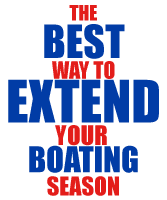So this replacement project began when the gas gauge on my 2008 SANTE 210 went out this last summer. I looked on several of the sites I normally use to order replacement Nautique parts and come to find out that there are no replacement gas gauges available for the Faria gateway box system, at least I couldn't find any. Out of curiosity I looked to see if other types of gauges were available and it looks like there are very few replacement parts available for this system. I did some reading on the forums and it appears that support for this system has been discontinued by Nautique and Faria. Since the Faria system has been a source of aggravation for my over the years I decided it was time for it to go.
There are a few options to replace these Faria gateway systems, one being an analog conversion kit. I didn't really like the idea of going backwards in technology so after studying the wiring diagrams available on this forum, some manuals from Faria and Zero Off I was able to download, and researching modern multifunction displays (MFDs) it looked like it was doable to refit my helm with a MFD and install a NMEA 2000 network to replace the Faria system. At this point I decided it was time to rid myself of another annoyance, the dated Clarion stereo system that was factory installed. I ended up going with a Fusion Apollo Series MS-RA770 head unit, and replaced the Clarion amp with a JL M600/6 to run all the in boat speakers and a JL MX500/1 to run the sub. The tower speakers and amp I upgraded years ago with a pair of Wetsound Pro485s running off a JL MHD600/4.
At this point I have the stereo all installed, the NMEA 2000 network installed, the tank level analog to NMEA 2000 adapter installed, and the Garmin wiring complete and mocked up in the dash. I was able to get all the wiring done without cutting any wiring on the boat wiring harness. I'm just waiting for 1 more gauge to come in stock to complete this project. The next several post will be some steps I had to take to get to this point.
There are a few options to replace these Faria gateway systems, one being an analog conversion kit. I didn't really like the idea of going backwards in technology so after studying the wiring diagrams available on this forum, some manuals from Faria and Zero Off I was able to download, and researching modern multifunction displays (MFDs) it looked like it was doable to refit my helm with a MFD and install a NMEA 2000 network to replace the Faria system. At this point I decided it was time to rid myself of another annoyance, the dated Clarion stereo system that was factory installed. I ended up going with a Fusion Apollo Series MS-RA770 head unit, and replaced the Clarion amp with a JL M600/6 to run all the in boat speakers and a JL MX500/1 to run the sub. The tower speakers and amp I upgraded years ago with a pair of Wetsound Pro485s running off a JL MHD600/4.
At this point I have the stereo all installed, the NMEA 2000 network installed, the tank level analog to NMEA 2000 adapter installed, and the Garmin wiring complete and mocked up in the dash. I was able to get all the wiring done without cutting any wiring on the boat wiring harness. I'm just waiting for 1 more gauge to come in stock to complete this project. The next several post will be some steps I had to take to get to this point.









Comment